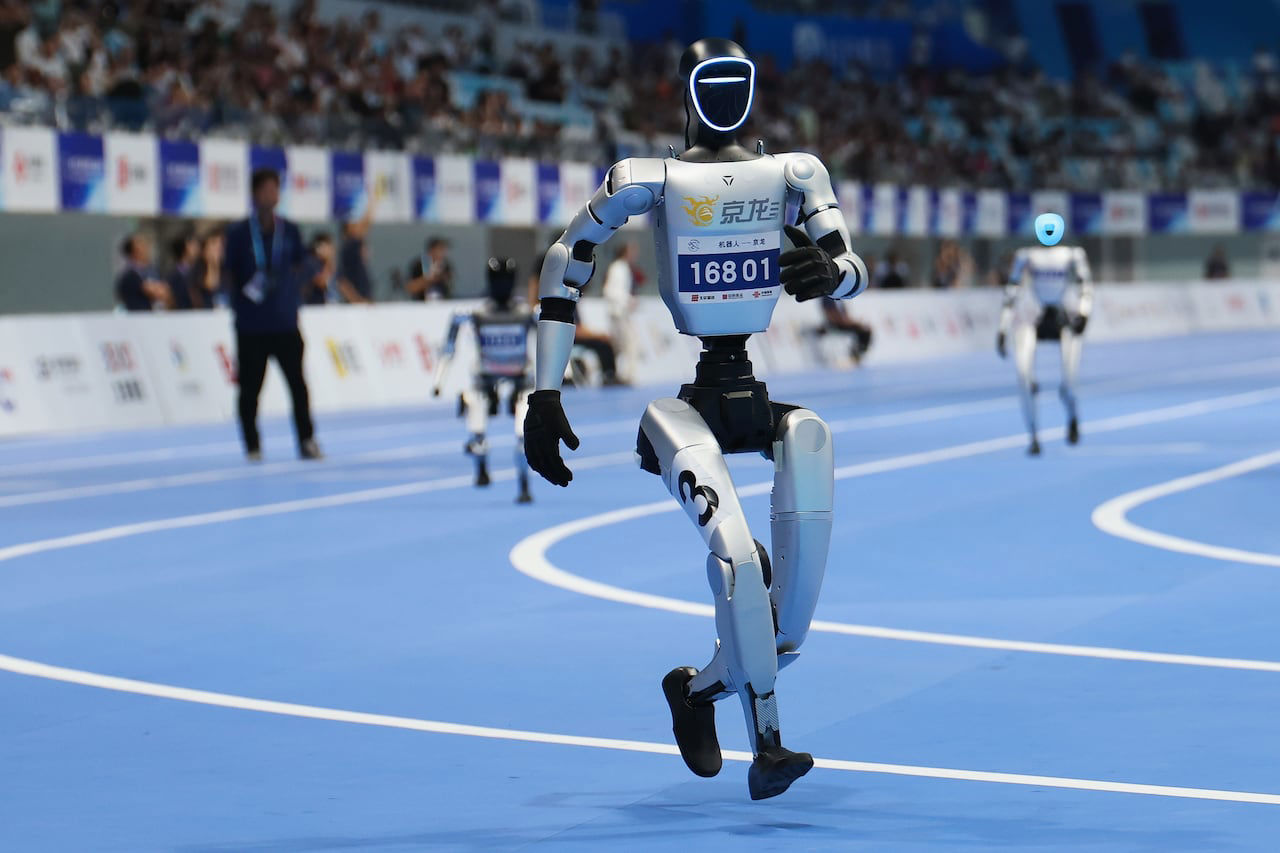In the global race for robotic dominance, Chinese humanoid robots are increasingly in the spotlight. From tech expos to large scale competitions, these machines are being presented as the future of human robot interaction.
Yet despite their ability to dance, run, and perform acrobatics, many still falter at something far more fundamental basic household chores like folding laundry, cleaning a room, or carrying luggage. This contrast was clearly visible at the World Humanoid Robot Games in Beijing, where more than 500 robots competed.
Some dazzled the crowd with their athleticism, while others struggled to perform simple tasks. The games exposed both the remarkable progress and the persistent weaknesses of China’s robotics industry. Daily chores appear simple for humans but are profoundly complex for robots.
Tasks like moving boxes or cleaning involve more than strength they require dexterity, precision, and contextual awareness. Unlike factory robots designed for repetitive motions, humanoid robots must adapt to unpredictable environments.
A floor may be cluttered, a suitcase may be heavier than expected, or surfaces may be uneven. Each of these variables challenges robotic hardware and software.
Dr. Li Jian, a robotics expert at Tsinghua University, explained. Robots thrive in structured environments like factories. But the human home or workplace is dynamic, messy, and unpredictable. That’s why even advanced Chinese humanoid robots often freeze or fail when asked to perform daily chores.
The Luggage Delivery Task
One highlight of the Beijing games was the luggage delivery challenge. Robots had to identify and transport suitcases from one spot to another. While a handful succeeded, most failed to grip properly, lost balance, or moved too slowly.
This mirrors real world deployments in Chinese hotels. A Shenzhen based hotel that tested service robots reported frequent interruptions robots stopped when encountering crowds or children, and sometimes stalled due to weak Wi-Fi.
Yet interestingly, customer satisfaction surveys showed guests still enjoyed the novelty of robotic delivery, even if it wasn’t flawless. This case highlights both the promise and the pitfalls of practical humanoid robotics.
Entertainment vs. Real World Utility
Humanoid robots are often designed for entertainment. At exhibitions, they dance, sprint, and even play basketball. These demonstrations wow audiences but don’t translate into consistent real world performance.
Entertainment is predictable and controlled chores are not. Stacking boxes requires precision grip, folding laundry demands adaptability, and sweeping floors involves recognition of unpredictable debris.
As robotics engineer Zhang Wei put it. It’s easier to program a robot to dribble a basketball than to train it to clean a living room. This explains why Chinese humanoid robots excel on stage but stumble in homes and offices.
The Roadblocks
Industry voices provide insight into the barriers. Dr. Andrew Ng, AI pioneer, stresses learning through experience. Robots must undergo trial and error like children do when learning to walk or clean. Scaling this safely and affordably remains the biggest hurdle.
Professor Chen Yu of Beijing Institute of Technology believes hardware is the bottleneck. China’s AI is strong, but the motors, joints, and tactile sensors need significant refinement before robots can master delicate tasks.
Sarah Mitchell, robotics market analyst, highlights demographics. China faces labor shortages and an aging population. The demand for practical humanoid robots is enormous, which will accelerate innovation in coming years.
Living With a Robot
For Wang Min, a Beijing resident, owning a humanoid robot has been both fun and frustrating. At first it felt futuristic. The robot served drinks and greeted visitors.
But when I asked it to help clean or move things, it often froze or knocked objects over. My children love it, but for real work, it’s not reliable yet.
This shows the current gap while Chinese humanoid robots are fascinating companions, they are not yet dependable helpers.
Why Mastering Chores Is Crucial
Menial tasks may not sound glamorous, but they are the key to mainstream adoption. If humanoid robots can reliably clean, cook, or assist with chores, entire industries could be transformed.
Healthcare With China’s aging population, humanoid robots could help with lifting patients, feeding, and mobility assistance.
Hospitality Hotels and restaurants could reduce dependency on staff by automating room service, cleaning, and customer support.
Logistics Robots capable of lifting and organizing packages could revolutionize warehouse efficiency. Mastering chores isn’t just about convenience it’s about unlocking billions of dollars in economic value.
The Cleaning Challenge
Another event at the Beijing competition was the room cleaning challenge. Robots had to identify clutter, pick up objects, and return them to the right place. Most failed when objects were irregularly shaped or heavier than expected.
This is consistent with trials by companies like Xiaomi and UBTech, which are developing home robots. Current models show progress but still depend heavily on human oversight.
Despite setbacks, optimism is high. The Chinese government has pledged support for robotics research, aiming to make China a global leader by 2035. With heavy investment from both state and private firms, progress is accelerating.
But for this vision to materialize, Chinese humanoid robots must master the basics first. Folding clothes and cleaning rooms may not be glamorous, but these are the real benchmarks of utility.
Not Ready to Rule the World
The World Humanoid Robot Games gave the world a glimpse of robotics’ future. While audiences cheered athletic feats, the struggles with chores revealed a deeper truth: robots remain far from mastering the tasks humans take for granted.
Until Chinese humanoid robots can perform daily chores with human level consistency, they will remain more spectacle than solution. Still, with relentless innovation and real world testing, the day may come when these robots evolve from entertainers to indispensable helpers in homes, hospitals, and workplaces.

